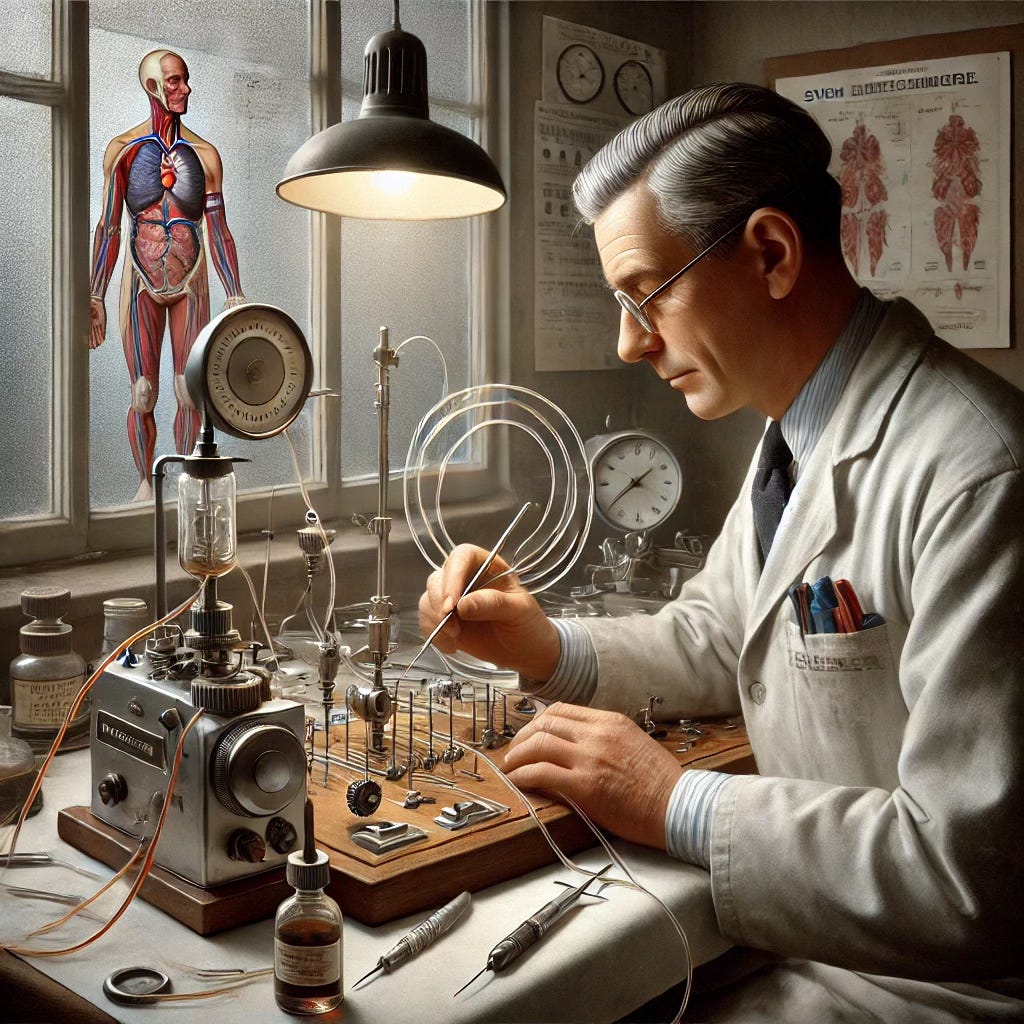The Seldinger Legacy: A Simple Innovation That Changed Healthcare
In 1953, Dr. Sven Ivan Seldinger , a Swedish Radiologist wasn’t setting out to become a pioneer in medical innovation. What he wanted was a safer, more efficient way to perform catheterizations. The traditional methods were invasive and fraught with complications, so he developed a new technique that involved using a guidewire to insert catheters with minimal invasion.
This simple idea—now known as the **Seldinger technique**—became a cornerstone of modern healthcare. It revolutionized procedures from **central line insertions** to **percutaneous tracheostomies**, allowing healthcare professionals to perform delicate tasks more safely and efficiently. Over the years, it has saved countless lives, making Dr. Seldinger’s small innovation one of the most impactful in medical history.
What stands out about Seldinger’s story is the power of **intentional problem-solving**. He didn’t set out to change the world—he set out to **solve a problem**. But as a result, his innovation rippled through healthcare for decades, influencing countless procedures worldwide.
The ICU: A Hub for Collaborative Innovation
Innovation in healthcare isn’t always about breakthroughs that make headlines. Sometimes, it’s about the small adjustments, the quick thinking, and the collaborative problem-solving that happens in moments of crisis. I’ve seen this first-hand in the ICU, where every decision can mean the difference between life and death.
Take the story of Master Bharath, a 14-year-old boy who came to our ICU with Guillain-Barré Syndrome. His condition was severe—he had **ventilator-associated pneumonia, followed by a pneumothorax that worsened his respiratory failure. At one point, his CO2 levels skyrocketed to 150 mmHg, and his oxygen saturation dropped to 30%.
This was one of those moments when collaborative innovation became essential. As a team, we brainstormed different approaches, using every available resource, and making adjustments based on what we saw. We didn’t have all the answers, but our collective effort—fueled by the intention to save his life—started turning things around.
It wasn’t a one-person show. Each team member and every doctor from different departements of neurology and critical care brought something to the table—whether it was modifying ventilator settings, giving the right drugs,manipulating the suction on the chest tube, or keeping the family informed and hopeful. It was the power of teamwork and shared innovation that ultimately led to Bharath’s recovery. Seeing him walk out of the ICU fully recovered was a moment of deep gratitude, not just for me, but for every person who played a part in his care.
What Holds Us Back from Innovation?
Even though healthcare is a field that constantly pushes us to solve problems, innovation doesn’t always come naturally. In fact, many things can hold us back—fear of failure, the pressure of being judged, or a reliance on existing solutions.
One of the biggest challenges I’ve faced is self-doubt. As doctors, we’re trained to follow protocols, but there are moments when the situation calls for something outside the box. In the past, I would hesitate to innovate, questioning whether I had the right or the expertise to try something new.
For example, in one case involving a patient with thyroid cancer and severe stridor, we couldn’t reintubate him after an accidental extubation. His airway was compromised by swelling from the malignancy. There was no clear-cut solution in the textbook. But after assessing the situation, I found a small space near the cricothyroid membrane and used the Seldinger technique to insert a needle, guidewire, and then a small-sized ET tube. It was a critical moment of innovation under pressure.
I’ve realized that the key to innovation isn’t waiting for perfect conditions—it’s having the intention to solve a problem, trusting your instincts, and collaborating with those around you.
Setting Clear Intentions: The Driving Force Behind Innovation
One of the most important lessons I’ve learned is that clear intentions drive innovation. Whether it's saving a patient’s life or finding a more efficient way to perform a procedure, when your goal is clear, the solutions begin to emerge.
The case of Master Bharath taught me that innovation often comes from a place of necessity. We weren’t experimenting with new techniques for the sake of it—we were trying to save his life. That intention fueled every decision, every adjustment, and every creative solution we came up with.
Developing the Innovator’s Mindset: Problem Solving for the Greater Good
So how do we develop an innovator’s mindset in our day-to-day practice?
1. Deliberate Observation: The first step is to notice the problems around you. Whether it’s a procedure that could be simplified or a recurring issue that hasn’t been addressed, start with **awareness**. Pay attention to where small tweaks can lead to big improvements.
2. Collaborate & Co-Innovate: Innovation thrives on collaboration. Draw on the expertise and perspectives of your colleagues. In healthcare, no one works alone. Some of the best innovations happen when teams come together, just like in Bharath’s case, where everyone contributed to his survival.
3. Set Clear Intentions: Whether your goal is to improve patient care, reduce costs, or enhance the efficiency of a process, make sure your intention is clear. It will give you the direction you need to innovate meaningfully.
4. Solve Problems That Matter: Think about what truly matters in the long run. What can you do today that will solve a pressing issue for your patients or your colleagues? Remember, Seldinger’s technique wasn’t a grand plan—it was a response to a practical problem that ended up saving lives for generations.
The Ripple Effect of Innovation in Healthcare
The ripple effect of innovation is far-reaching. Small ideas can create solutions that change the way we practice medicine for decades. Whether it’s the Seldinger technique or a collaborative effort like saving Master Bharath, every innovation stems from clear intentions, problem-solving, and teamwork.
So, as you move through your day, ask yourself—What can I simplify? What problems need solving? How can I collaborate to create something that adds value?
Remember, the mindset of an innovator isn’t reserved for a select few—it’s something we can all cultivate. It starts with being present, noticing problems, and trusting that the solutions are within our reach.
Conclusion: Where Will Your Innovation Take You?
As you reflect on your own practice, think about the areas where you can innovate—whether it’s improving patient care, simplifying a process, or collaborating with others to solve bigger problems. The **Seldinger technique** shows us that even small, intentional changes can create ripples that last a lifetime.
So, what’s your Seldinger technique?
Take some time today to reflect on the small problems in your practice. What’s one issue you’ve noticed that could use a solution? What’s holding you back from innovating in your field? Leave a comment or share your thoughts below—I’d love to hear how you’re bringing innovation into your healthcare journey.
Stay balanced, stay innovative and in the Zone.
Dr.Krishna Bharath, MD




















Share this post